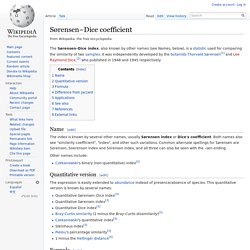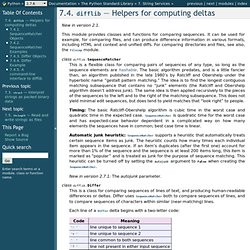

Bitap algorithm. The bitap algorithm (also known as the shift-or, shift-and or Baeza-Yates–Gonnet algorithm) is an approximate string matching algorithm.

The algorithm tells whether a given text contains a substring which is "approximately equal" to a given pattern, where approximate equality is defined in terms of Levenshtein distance — if the substring and pattern are within a given distance k of each other, then the algorithm considers them equal. The algorithm begins by precomputing a set of bitmasks containing one bit for each element of the pattern. Then it is able to do most of the work with bitwise operations, which are extremely fast.
Due to the data structures required by the algorithm, it performs best on patterns less than a constant length (typically the word length of the machine in question), and also prefers inputs over a small alphabet. A technique for counting ones in a binary computer. Approximate string matching. Fuzzy Mediawiki search for "angry emoticon": "Did you mean: andré emotions" Overview[edit] The closeness of a match is measured in terms of the number of primitive operations necessary to convert the string into an exact match.

This number is called the edit distance between the string and the pattern. The usual primitive operations are:[1] insertion: cot → coatdeletion: coat → cotsubstitution: coat → cost These three operations may be generalized as forms of substitution by adding a NULL character (here symbolized by *) wherever a character has been deleted or inserted: insertion: co*t → coatdeletion: coat → co*tsubstitution: coat → cost Some approximate matchers also treat transposition, in which the positions of two letters in the string are swapped, to be a primitive operation.
Different approximate matchers impose different constraints. Hamming distance. Examples[edit] The Hamming distance between: "karolin" and "kathrin" is 3.

"karolin" and "kerstin" is 3.1011101 and 1001001 is 2.2173896 and 2233796 is 3. Special properties[edit] For binary strings a and b the Hamming distance is equal to the number of ones (population count) in a XOR b. By treating each symbol in the string as a real coordinate; with this embedding, the strings form the vertices of an n-dimensional hypercube, and the Hamming distance of the strings is equivalent to the Manhattan distance between the vertices. Dice's coefficient. Name[edit] The index is known by several other names, usually Sørensen index or Dice's coefficient.

Both names also see "similarity coefficient", "index", and other such variations. Common alternate spellings for Sørensen are Sorenson, Soerenson index and Sörenson index, and all three can also be seen with the –sen ending. Other names include: Czekanowski's binary (non-quantitative) index[3] Quantitative version[edit] Quantitative Sørensen–Dice index[3]Quantitative Sørensen index[3]Quantitative Dice index[3]Bray-Curtis similarity (1 minus the Bray-Curtis dissimilarity)[3]Czekanowski's quantitative index[3]Steinhaus index[3]Pielou's percentage similarity[3]1 minus the Hellinger distance[4] Formula[edit] Sørensen's original formula was intended to be applied to presence/absence data, and is where A and B are the number of species in samples A and B, respectively, and C is the number of species shared by the two samples; QS is the quotient of similarity and ranges between 0 and 1.[5] night nacht. Pylevenshtein - A fast implementation of Levenshtein Distance (and others) for Python.
SimString - A fast and simple algorithm for approximate string matching/retrieval. A fast and simple algorithm for approximate string matching/retrieval SimString is a simple library for fast approximate string retrieval.

Approximate string retrieval finds strings in a database whose similarity with a query string is no smaller than a threshold. Finding not only identical but similar strings, approximate string retrieval has various applications including spelling correction, flexible dictionary matching, duplicate detection, and record linkage. SimString supports cosine, Jaccard, dice, and overlap coefficients as similarity measures. SimString uses letter n-grams as features for computing string similarity. SimString has the following features:
7.4. difflib — Helpers for computing deltas — Python v2.7.2 documentation. New in version 2.1.

This module provides classes and functions for comparing sequences. It can be used for example, for comparing files, and can produce difference information in various formats, including HTML and context and unified diffs. For comparing directories and files, see also, the filecmp module. class difflib.SequenceMatcher This is a flexible class for comparing pairs of sequences of any type, so long as the sequence elements are hashable. Timing: The basic Ratcliff-Obershelp algorithm is cubic time in the worst case and quadratic time in the expected case.
Automatic junk heuristic: SequenceMatcher supports a heuristic that automatically treats certain sequence items as junk. New in version 2.7.1: The autojunk parameter. class difflib.Differ This is a class for comparing sequences of lines of text, and producing human-readable differences or deltas. Each line of a Differ delta begins with a two-letter code: Lines beginning with ‘?
Class difflib.HtmlDiff New in version 2.4. Journal of Algorithms : Fast parallel and serial approximate string matching. Software: Practice and Experience.